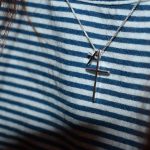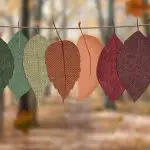Are you looking to add a touch of elegance to your accessories? Learn how to make a beautiful satin fabric bow in just a few simple steps.
With the right choice of fabric, precise measurements, and easy folding techniques, you’ll be able to create a stunning bow that can be attached to a hair clip or barrette.
Follow these clear and concise instructions to achieve a stylish and detailed finish.
Let’s get started!
Table of Contents
Choosing the Right Satin Fabric
To make a bow out of satin fabric, you should choose the right type of satin that matches your desired look and feel. When it comes to satin fabric types, there are several options to consider.
Charmeuse satin is soft and lightweight, perfect for creating delicate and elegant bows. Duchess satin, on the other hand, has a heavier weight and more pronounced sheen, making it ideal for creating bold and dramatic bows. Satin-faced organza is a combination of satin and organza, offering a unique texture and structure to your bow.
In addition to satin fabric types, color selection is also important. Satin fabric comes in a wide range of colors, allowing you to choose the perfect shade for your bow. Whether you want a classic black bow for a formal event or a vibrant red bow for a festive occasion, satin fabric offers a variety of options to suit your needs. When selecting the color, consider the overall theme or mood you want to convey with your bow.
Measuring and Cutting the Satin Fabric
First, measure and cut the satin fabric to the desired length for your bow. To ensure accuracy, follow these measuring techniques and cutting tips:
-
Use a measuring tape: Measure the length of the fabric using a flexible measuring tape. Wrap it around the area where you want the bow to be and mark the desired length.
-
Consider the bow size: Determine how big you want your bow to be before cutting the fabric. Keep in mind the width and length you desire, as this will affect the overall look of the bow.
-
Use sharp fabric scissors: When it comes to cutting satin fabric, using sharp fabric scissors is crucial. This will ensure clean, precise cuts and prevent fraying.
To cut the fabric, lay it out on a flat surface and fold it in half lengthwise. Align the edges and smooth out any wrinkles. Then, carefully cut along the marked line, following the fold. Be sure to cut through both layers of the fabric.
Folding and Shaping the Bow Loops
Now that you’ve measured and cut your satin fabric, it’s time to move on to the next step: folding and shaping the bow loops.
This subtopic will focus on the various loop folding techniques that you can use to create different bow styles. Additionally, you’ll learn how to shape the bow with fabric, ensuring that it holds its desired form.
Loop Folding Techniques
When folding the loops of your satin fabric bow, make sure to gently twist and secure each loop with a small stitch. This technique will ensure that your bow maintains its shape and stays in place.
To begin, take the end of the satin fabric and fold it over to create a loop. Hold the loop in place with your fingers and twist it gently to give it a nice shape. Then, secure the twisted loop with a small stitch using a needle and thread.
Repeat this process for each loop of your bow, making sure to twist and secure them all. This technique will give your satin fabric bow a professional and polished look.
If you don’t have satin fabric, you can also try using ribbon alternatives such as velvet or organza for a different texture and style.
Shaping Bow With Fabric
To achieve a polished look, gently twist and secure each loop of your satin fabric bow with small stitches. This technique ensures that your bow retains its shape and stays in place.
Here are three loop tying techniques to help you shape your bow with fabric:
-
Pinch and fold: Pinch the fabric at the desired loop size and fold it in half. Secure the fold with a small stitch or fabric glue. Repeat this step for each loop of your bow.
-
Overlapping loops: Start by making a loop with your fabric. Then, create another loop by folding the fabric in the opposite direction. Overlap the two loops and secure them together with stitches or glue.
-
Stacked loops: Instead of creating one large loop, make multiple smaller loops. Stack the loops on top of each other, securing them with stitches or glue. This technique adds dimension and visual interest to your bow.
Securing the Bow Loops at the Center
Now that you’ve successfully folded and shaped the bow loops, it’s time to secure them at the center.
This brings up a few key points to consider: Do you want to use a knot or glue to hold the loops together? Should the securing method be hidden or visible in the final bow? And finally, how much tension and tightness should you apply to ensure the loops stay in place?
Let’s delve into these questions and explore the best techniques for securing your bow loops.
Knot or Glue?
It’s best to decide whether to knot or glue the ends of the satin fabric when making a bow. Here are the pros and cons of each option:
-
Glue:
- Pros: Gluing the ends of the satin fabric is quick and easy. It provides a secure hold, preventing the fabric from unraveling.
- Cons: Glue may leave a visible residue on the fabric, especially if not applied correctly. It may also make the fabric stiff and less flexible.
-
Stitching:
- Pros: Stitching the ends of the satin fabric creates a clean and seamless finish. It allows for more flexibility and a natural drape of the fabric.
- Cons: Stitching requires more time and skill. If not done properly, the stitches may show or loosen over time.
Consider your preferences and the desired outcome when deciding whether to knot or glue the ends of your satin fabric.
Hidden or Visible?
Consider whether you prefer a hidden or visible finish for the ends of your satin fabric. Both options have their advantages and it ultimately depends on your personal preference and the overall look you’re going for.
A hidden finish involves folding the raw edges of the fabric inward and sewing them down, creating a clean and seamless appearance. This method works well for satin, as it is a delicate and elegant fabric.
On the other hand, an exposed finish can add a touch of texture and visual interest to your satin fabric. You can achieve this by leaving the raw edges of the fabric visible and even adding decorative stitching or trim. This approach works particularly well with velvet, which has a luxurious and plush texture.
Ultimately, the choice between hidden and exposed finishes comes down to your desired aesthetic and the specific fabric you are working with.
Tension and Tightness?
If you want a clean and professional finish, you’ll need to adjust the tension and tightness of your stitches. This is particularly important when making a bow out of satin fabric. Satin is a delicate material that requires careful handling to avoid puckering or pulling.
To achieve the perfect tension control and tightness for your satin bow, follow these steps:
- Start by adjusting the tension on your sewing machine. Test the stitches on a scrap piece of fabric to ensure they are neither too loose nor too tight.
- Use a ballpoint needle to prevent snagging or damaging the satin fabric.
- When sewing the bow, make sure to maintain a consistent stitch length and avoid pulling or stretching the fabric.
Creating the Bow Tails
To create the bow tails, you’ll need to cut two long strips of satin fabric. This step is crucial in achieving the perfect bow. The length of the strips will depend on the size of the bow you desire. Measure and cut the strips accordingly, ensuring they are equal in length.
Once you have your strips of satin fabric, it’s time to begin creating the bow tails. Take one strip and fold it in half lengthwise, with the right sides facing each other. Secure the raw edges together with pins or clips. Repeat the same process with the second strip.
Now, it’s time to tie the perfect bow. There are several different bow styles you can choose from, such as the classic looped bow or the more intricate butterfly bow. To tie a looped bow, take one strip and make a loop by folding it in half. Cross the ends over each other, forming a simple knot. Adjust the loops and tails until you achieve the desired look.
Remember to keep the tails long enough to gracefully hang down, adding an elegant touch to your finished satin bow.
Attaching the Bow to a Hair Clip or Barrette
Attaching the bow to a hair clip or barrette can be done by securing it tightly with a small piece of adhesive or a few stitches. Hair clip placement is key to ensure that the bow stays in place and looks stylish. There are different bow styles that you can choose from, such as the classic bow, the double bow, or the twisted bow. Regardless of the style, the process of attaching the bow remains the same.
First, determine where you want the bow to sit on your hair clip or barrette. Once you have decided, secure the bow tightly in that position using a small piece of adhesive or a few stitches. Make sure to align the center of the bow with the center of the hair clip or barrette. This will ensure that the bow sits straight and looks symmetrical.
If you are using adhesive, apply a small amount to the back of the bow and press it firmly onto the hair clip or barrette. Hold it in place for a few seconds to allow the adhesive to set. If you are using stitches, thread your needle with a matching thread color and sew the bow onto the hair clip or barrette. Make small, neat stitches to keep the bow securely attached.
Once the bow is attached, check to make sure it is secure. Give it a gentle tug to ensure that it doesn’t come loose. If needed, reinforce the attachment with additional adhesive or stitches.
With these simple steps, you can easily attach a bow to a hair clip or barrette and create a stylish accessory for your hair.
Styling and Finishing Touches
Once you’ve attached the bow securely, it’s time to add some final styling touches to complete the look. Here are three styling options and embellishment ideas to make your satin fabric bow truly stand out:
-
Ribbon tails: Cut two long strips of ribbon in a complementary color to your bow. Attach them to the back of the bow, letting them hang down for an elegant and playful touch. You can curl the ends of the ribbon for added flair.
-
Rhinestone accents: Add a touch of sparkle to your bow by gluing small rhinestones or crystals onto the center knot. This will instantly elevate the look and make it perfect for special occasions or formal events.
-
Feathers: For a unique and bohemian touch, attach a few feathers to the back of your satin bow. Choose feathers in colors that complement your outfit or opt for neutral tones for a more subtle effect. This embellishment idea is perfect for adding a touch of whimsy to your hair accessories.
With these styling options and embellishment ideas, you can customize your satin fabric bow to suit your personal style and occasion. Whether you’re attending a wedding, party, or simply want to elevate your everyday look, these finishing touches will make your bow truly unique.
Conclusion
In conclusion, making a bow out of satin fabric is a fun and easy DIY project. By choosing the right satin fabric and measuring and cutting it accurately, you can ensure a good start. Folding and shaping the bow loops and securing them at the center is the next step. Creating the bow tails and attaching the bow to a hair clip or barrette completes the process. Don’t forget to add your own unique styling and finishing touches to make the bow truly your own. Enjoy the process and have fun showing off your handmade satin bow!
- Fabrics and Their Role in Wellness and Comfort - July 22, 2024
- Choosing Safe Fabrics for Baby Clothes - July 22, 2024
- Impact of Fabrics on Skin Health - July 22, 2024






